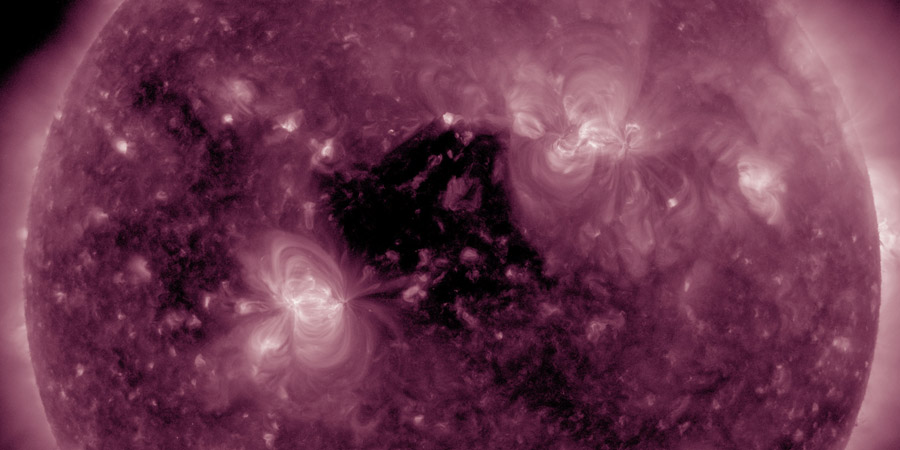Coronal hole faces Earth
Thursday, 30 March 2017 18:46 UTC

The sunspots have gone silent so we shift our attention once again to coronal holes! Today we have an equatorial coronal hole facing our planet and the solar wind stream flowing from it could arrive at Earth in about 3 days from now.
A coronal hole is facing Earth. Enhanced solar wind could arrive in ~3 days - Follow live on https://t.co/T1Jkf60tdB pic.twitter.com/JwwX2etMUR
— SpaceWeatherLive (@_SpaceWeather_) March 30, 2017
This coronal hole is not as large as the coronal hole that faced our planet last week (caused moderate G2 geomagnetic storm conditions last Monday) but the location of this coronal hole makes it interesting due to it pretty much being exactly on the solar equator. This means the solar wind stream is likely to impact Earth head-on. Normally we would compare this coronal hole with how it looked like during the previous rotation but it was barely visible at that time so it formed while it didn't face our planet the past few weeks.
What kind of geomagnetic conditions should we expect? This is hard to predict as the fast solar wind that we are in right now could work against us here. Most geomagnetic activity from a coronal hole solar wind stream comes from what we call a co-rotating interaction region (CIR) ahead of the fast stream. A CIR is formed where the fast solar wind from a coronal hole catches up with the slower ambient solar wind which causes a compressed shock with a strong magnetic field. If the solar wind speed remains fairly high as it is now we could see that the streams kind of blend into each other without forming this CIR and that would not be so great for enhanced geomagnetic conditions.
So what do we know? At least we can conclude that this solar wind stream is likely to arrive in about 3 days from now which would be this coming Sunday (2 April 2017) but the exact strength of the stream is hard to predict. Active geomagnetic conditions (Kp4) are likely with perhaps an isolated period of minor G1 geomagnetic storming but be sure to keep an eye on the data that you can find on this website to exactly see what is going to happen.
Thank you for reading this article! Did you have any trouble with the technical terms used in this article? Our help section is the place to be where you can find in-depth articles, a FAQ and a list with common abbreviations. Still puzzled? Just post on our forum where we will help you the best we can!
Latest news
Latest forum messages
Support SpaceWeatherLive.com!
A lot of people come to SpaceWeatherLive to follow the Sun's activity or if there is aurora to be seen, but with more traffic comes higher server costs. Consider a donation if you enjoy SpaceWeatherLive so we can keep the website online!

Space weather facts
| Last X-flare | 2025/03/28 | X1.1 |
| Last M-flare | 2025/04/22 | M1.3 |
| Last geomagnetic storm | 2025/04/21 | Kp5+ (G1) |
| Spotless days | |
|---|---|
| Last spotless day | 2022/06/08 |
| Monthly mean Sunspot Number | |
|---|---|
| March 2025 | 134.2 -20.4 |
| April 2025 | 124.6 -9.6 |
| Last 30 days | 121.2 -9.9 |


